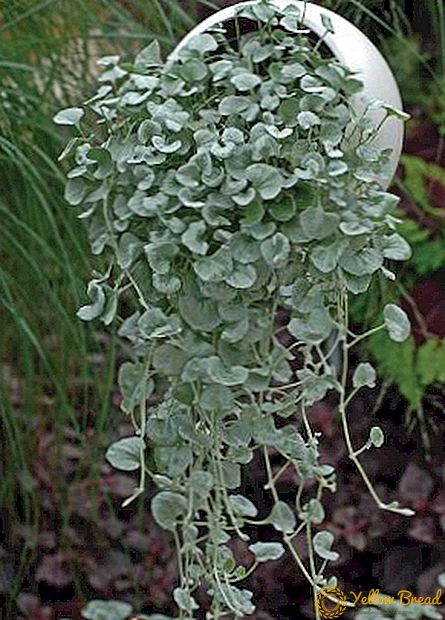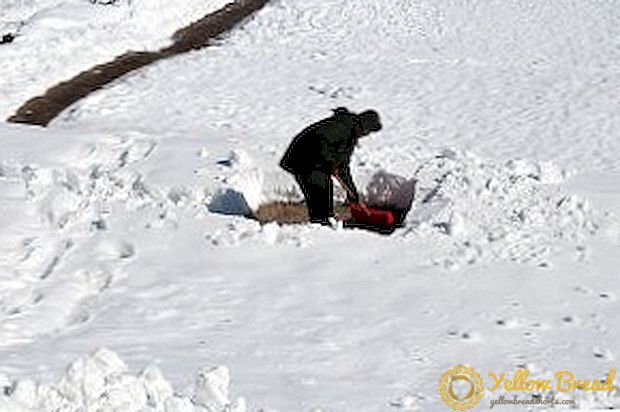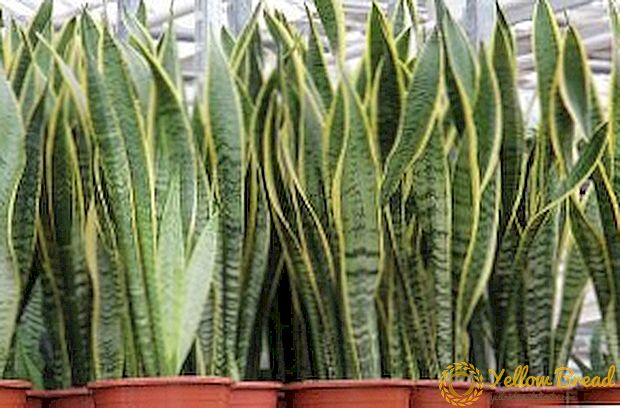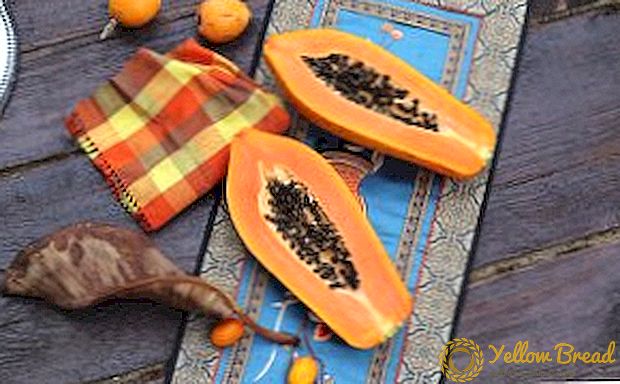 In this article we will get acquainted with such a plant as a wood anemone, consider its photo and description, the rules for caring for it, as well as useful properties that the flower abound.
In this article we will get acquainted with such a plant as a wood anemone, consider its photo and description, the rules for caring for it, as well as useful properties that the flower abound.
- Botanical description
- Habitats
- Conditions for growing in the garden
- Planting anemone
- Peculiarities of care
- Beneficial features
Botanical description
Anemone forest - novice gardeners can not often hear this name. But it is necessary to show a flower or to voice its name in Latin ("anemone sylvestris"), as everything at once becomes clear. Forest anemone is the most common anemone that is familiar to the ear and eyes.
 The flowers themselves are single, have a white color of petals and a yellow heart-core, and their diameter reaches from 2 to 7 cm. If we talk about the plant as a whole, then it cannot be called single - anemones grow in heap groups, hiding the ground under the fluffy leaves that look like parsley .
The flowers themselves are single, have a white color of petals and a yellow heart-core, and their diameter reaches from 2 to 7 cm. If we talk about the plant as a whole, then it cannot be called single - anemones grow in heap groups, hiding the ground under the fluffy leaves that look like parsley .Anemone forest blooms later than other anemones - its flowering begins in the middle - the end of May, and ends by the middle of July. On average, it blooms for about 25 days. In August, the anemone blooms again, and the fruits appear in June.
The numerous fruits of the anemone resemble small flattened nuts, up to 3 mm in size, the stamens are short and have a rich yellow color.

Habitats
You can meet anemones in nature quite often. Places where anemones grow are easy to find. The plant chooses dry areas for life, where the soil is not saturated with moisture, with a temperate climate - forest edges, steppes, meadows, shrub slopes, sparse oak and coniferous forests, as well as rocky precipices.
In nature, the anemone lives in the forests of Europe, Central Asia, Western and Central Siberia, as well as in Mongolia, China, Ukraine, Belarus, European parts of Russia and the Caucasus.
Forest anemone - the only type of anemones that easily take root in sandy soils and develop favorably in such areas.

Conditions for growing in the garden
It is possible to find a flower not only at the forest edge, but also on city beds or in front gardens in front of the houses. Anemones are often planted together with other plants, thus creating a composition, so the plant can be classified as decorative.
As mentioned earlier, the anemone is drought-resistant and grows well on dry, sandy soils, but on loose, moderately moist soil, it blooms much better. An ideal place for planting a flower would be semi-shady areas, but if there are no such ones nearby - the sunlit areas will also work.
The soil on which the anemone will subsequently grow should in no case be hard. Sand or humus will help make it more suitable for the plant. 
Planting anemone
It is best to plant anemone in the shade of trees or shrubs - so it will receive a sufficient amount of light.And she gets along well with other flowers, among which are dwarf barberries, pansies, primroses and other small-leaved ones.
 If the soil is not fertile, it needs to be fertilized, for this purpose organic matter or mineral fertilizers are well suited. The addition of liquid organic fertilizers to the soil is recommended during the period when flower buds are only formed. Complex fertilizers should be given to anemone in moderation, the most suitable time for this is the flowering period.
If the soil is not fertile, it needs to be fertilized, for this purpose organic matter or mineral fertilizers are well suited. The addition of liquid organic fertilizers to the soil is recommended during the period when flower buds are only formed. Complex fertilizers should be given to anemone in moderation, the most suitable time for this is the flowering period.Fertilizing the soil in the next year or two is not required - for this period the anemone will have enough of those fertilizers that she received during planting.
Peculiarities of care
The plant is not particularly whimsical, but you need to know some rules of caring for him, so as not to cause him harm.
Anemone is drought resistant, it can be saturated only with moisture from precipitation. If there is no rain for a long time, then you can water the flower.
In regular watering anemone needs in a period of active growth. It is important not to overdo it and do not flood the soil with water. This will not help to saturate the earth with the necessary moisture for a long time, but will only lead to its swamping, which will result in rotting of the roots of the anemones.  The plant in no case can not sap. Its roots are not located too deeply, so such a treatment of the soil can only damage the roots. All weeds need to be pulled out manually. It is advisable to do this after the flower receives a sufficient amount of water, but not immediately after watering.
The plant in no case can not sap. Its roots are not located too deeply, so such a treatment of the soil can only damage the roots. All weeds need to be pulled out manually. It is advisable to do this after the flower receives a sufficient amount of water, but not immediately after watering.
Often there is a need to plant anemone, because it quickly grows and can easily go to the territory of neighboring plants. For 3-4 years, the forest anemone can grow into a bush of diameters up to 30 cm.
 So that in winter the forest anemone does not suffer from cold temperatures, the flower should be hidden under a layer of peat, compost, sand and covered with a layer of leaves of at least 7 cm. This will help the development of young shoots, stimulates their growth.
So that in winter the forest anemone does not suffer from cold temperatures, the flower should be hidden under a layer of peat, compost, sand and covered with a layer of leaves of at least 7 cm. This will help the development of young shoots, stimulates their growth.Beneficial features
Anemone forest grown in a flower bed - a great decoration for the home. But those flowers that grow in nature, have many useful properties and are widely used in traditional medicine.
For treatment purposes, only the aerial part of the flower is used. The grass is harvested during the flowering period of anemones, and then dried outside, in the shade, or in rooms with good ventilation. Lay out the plant to a thin layer and periodically interfere with it.
 Most commonly used anemone decoction. It is used in diseases of the gastrointestinal tract, disorders of the diuretic system, sweating, delayed menstruation, problems with potency. Removes decoction of headache and toothache, helps with migraines, diseases of the nervous system, sexually transmitted diseases (such as syphilis or gonorrhea), is also used for kidney inflammation, gallstone disease, paralysis.
Most commonly used anemone decoction. It is used in diseases of the gastrointestinal tract, disorders of the diuretic system, sweating, delayed menstruation, problems with potency. Removes decoction of headache and toothache, helps with migraines, diseases of the nervous system, sexually transmitted diseases (such as syphilis or gonorrhea), is also used for kidney inflammation, gallstone disease, paralysis.External use of anemone is possible in the presence of pruritus, rheumatism, skin diseases.
On the basis of what was written above, we can say that the forest anemone is a flower that is not particularly capricious, growing in the wild, as well as in home gardens and front gardens.The description of its medicinal properties is striking in the variety of application of the plant for medicinal purposes, and the photos are pleasing to the eye with simplicity and elegant tenderness of flowering.






